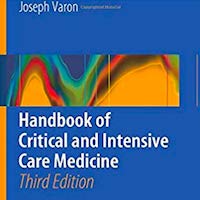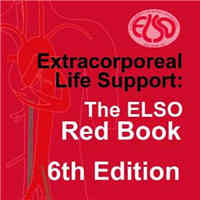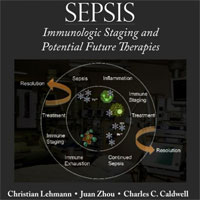Tag: sepsis
Standard vs. Double Dosing of Beta-lactam Antibiotics in Critically Ill Sepsis Patients
The BULLSEYE trial is a randomized controlled study designed to enhance the treatment of critically ill patients with septic shock. The concept of administering higher and double doses of beta-lactams in such patients... read more
Septic Distributive Shock: Resuscitative Endovascular Balloon Occlusion of the Aorta
Massive distributive shock can lead to total collapse of the cardiopulmonary system with a subsequent need for CPR. Partial REBOA may be a viable resuscitation adjunct in such cases to restore hemodynamics and increase coronary... read more
Mortality Time Frame Variability in Septic Shock Clinical Trials
There was considerable variability in the mortality time frames reported in ICU-based septic shock trials. This variability may lead to under or overestimation of the problem, overlooking the effectiveness of the interventions... read more
Hemophagocytic Lymphohistiocytosis Markers Associated with Mortality in Critically Ill Patients
The present study highlights the prognostic significance of HLH criteria in critically ill patients. Individuals exhibiting two or more criteria at ICU admission experienced nearly a doubling in mortality as compared to patients... read more
Total Bilirubin as a Marker for Hemolysis and Outcome in ARDS Patients Treated with vvECMO
Patients with acute respiratory distress syndrome (ARDS), treatment with veno-venous ECMO and a total bilirubin (tBili) plasma concentration over the threshold of 3.6 mg/dl had significantly lower chances of survival, recovery... read more
Sepsis: Definitions, Pathophysiology and the Challenge of Bedside Management
A comprehensive and state-of-the-art resource for clinicians who care for patients with sepsis and research scientist alike. Patients with severe sepsis requiring ICU admission have very high rates of ICU and overall... read more
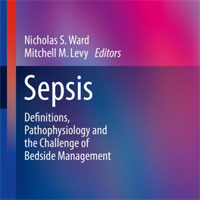
Failure to Rescue in ALF
The concept of failure to rescue has been used to measure the quality of care for complications developed following surgery. In patients with acute liver failure (ALF), the concept of failure to rescue highlights the... read more
Recent Advances in Severe Sepsis and Septic Shock Management
This review highlights recent advances in the treatment of severe sepsis and septic shock, emphasizing new strategies aimed at improving overall survival and reducing mortality in this patient population. Despite years... read more
Methylprednisolone vs. Hydrocortisone in Septic Shock Patients
Corticosteroids play an important role in the management of septic shock patients, especially in those with higher doses of vasopressor. However, the therapeutic benefits of corticosteroids are not limited to hydrocortisone... read more
Assessing the Risk of Poor Clinical Outcomes in Preterm Neonates with Late-onset Sepsis
A predictive calculator for assessing the risk of poor clinical outcomes in preterm neonates with late-onset sepsis (LOS) has been developed. By leveraging readily available clinical data at the time of blood culture collection,... read more
Machine Learning Model for Predicting Acute Pancreatitis Mortality in the ICU
Machine learning model has been proved to be superior to existing prediction scores for mortality prediction of Acute Pancreatitis (AP). The use of most of previous ML models is limited in clinical practice, mainly due... read more
Sepsis Management in Resource-limited Settings
This book is open access under a CC BY 4.0 license. It constitutes a unique source of knowledge and guidance for all healthcare workers who care for patients with sepsis and septic shock in resource-limited settings. More... read more
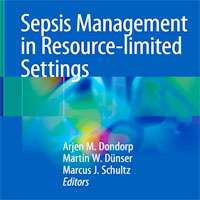
Predicting SA-AKI Mortality Using XGBoost Algorithm
The integration of advanced techniques with the XGBoost algorithm yielded a highly accurate and interpretable model for predicting Sepsis-Associated Acute Kidney Injury (SA-AKI) mortality across diverse populations. It... read more
Clinical Efficacy of Nafamostat Mesylate-assisted CRRT Therapy in SA-AKI Patients
Nafamostat Mesylate (NM)-assisted continuous renal replacement therapy (CRRT) therapy significantly improves the therapeutic efficacy of patients with sepsis-associated acute kidney injury (SA-AKI). This combined approach... read more
Impact of Short-Acting Beta-Blockers on the Outcomes of Septic Shock Patients
In patients with septic shock, short-acting beta-blockers may improve survival and reduce new-onset tachyarrhythmias. However, these findings were based on low certainty evidence and given ongoing concerns regarding adverse... read more
Thiamine and Ascorbic Acid in Sepsis and Septic Shock
Exploring the individual and synergistic effects of ascorbic acid and thiamine on key pathways implicated in sepsis pathophysiology has not yielded unequivocal evidence supporting their use without concomitant corticosteroids. Heterogeneity... read more
Severe Trauma and Sepsis: Organ Damage and Tissue Repair
This book discusses recent progress in organ damage and tissue repair following severe trauma and sepsis. In part 1, it introduces the theory and clinical practice in organ damage. In part 2, it covers all the subjects... read more
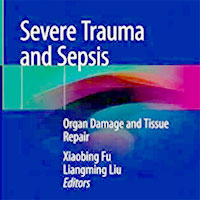
ARDS Predictors in ICU Patients with Sepsis Using Dynamic Immune Indicator Changes
This study underscores the pivotal role of dynamic immune indicator changes in predicting acute respiratory distress syndrome (ARDS) development among ICU sepsis patients. By incorporating immune cell and immunoglobulin dynamics... read more
Alcohol Consumption Association with the Risk of Bacterial Infection and Pneumonia
Alcohol consumption has a nonlinear J-shaped dose–response association with the risk of acquiring and dying due to bacterial infection and pneumonia, where moderate consumption between one-half and four UK units per day... read more
Pre-ICU Statin Use, AKI and in Hospital Mortality in Sepsis Patients
Pre-ICU statin therapy is associated with a lower risk of acute kidney injury (AKI), and improved in-hospital survival among obese patients with sepsis, suggesting its potential role as a protective measure in this high-risk... read more
The Triglyceride Glucose Index and Delirium Risk in Sepsis Patients
The triglyceride glucose (TyG) index represents a straightforward and efficacious instrument for nursing staff to ascertain the likelihood of delirium in patients with sepsis during the routine monitoring of their condition.... read more
Factors Influencing the Mortality of Patients with Subarachnoid Hemorrhage in the ICU
Spontaneous subarachnoid hemorrhage (SAH) is a prevalent condition for those between the ages of 50 and 60 years, with a high mortality rate in severe cases. The findings of this study indicate that a history of loss... read more




